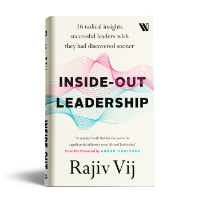Mark Twain might as well have been talking about climate change when he famously remarked, “Everybody talks about the weather, but nobody ever does anything about it.”
Climate change is for real and its alarming impact has been evident all around us. The proportion of hurricanes reaching categories 4 or 5 worldwide has risen from 20% in the 1970s to 35% in the 1990s; the increased frequency of extreme local weather like the 2003 heat wave across Europe that killed over 30,000 people; the receding glaciers (according to the UN, Himalayan glaciers could disappear by 2035 possibly impacting over two billion people); the increasing deterioration of ecosystem and the ensuing diseases with newer mutants of viruses; and the disappearing bee colonies, impacting agricultural produce in many developed countries, are all examples of this change. It is even leading to social strife in parts of the world – the reduction in rainfall in Darfur has turned millions of hectares of already marginal land into desert, leading to one of the largest social conflicts. As we look into the future, the dangers of increased hurricane activity in Central America and Southern US, the risks of places like Maldives, Bangladesh and Cairo being exposed to higher sea levels, the challenges of large scale social migration, and spread of new and unknown diseases worldwide are ominous.
While there’s a significant debate (although often more political than scientific) about whether humans are causing this climate change or if it is merely the result of a broader planetary cycle of change, the scientific community unequivocally suggests that humans are contributing to it. As we know, one of the biggest causes of climate change is the rising level of carbon emissions, brought about by burning of fossil fuels, like oil and coal, by cars, planes, homes, factories, and power plants. On average in the US, a passenger car emits over 5 tons of CO2 every year and a home emits 4 tons of CO2 per person each year. The Ecological Footprint Network has estimated that humanity’s burden on…














